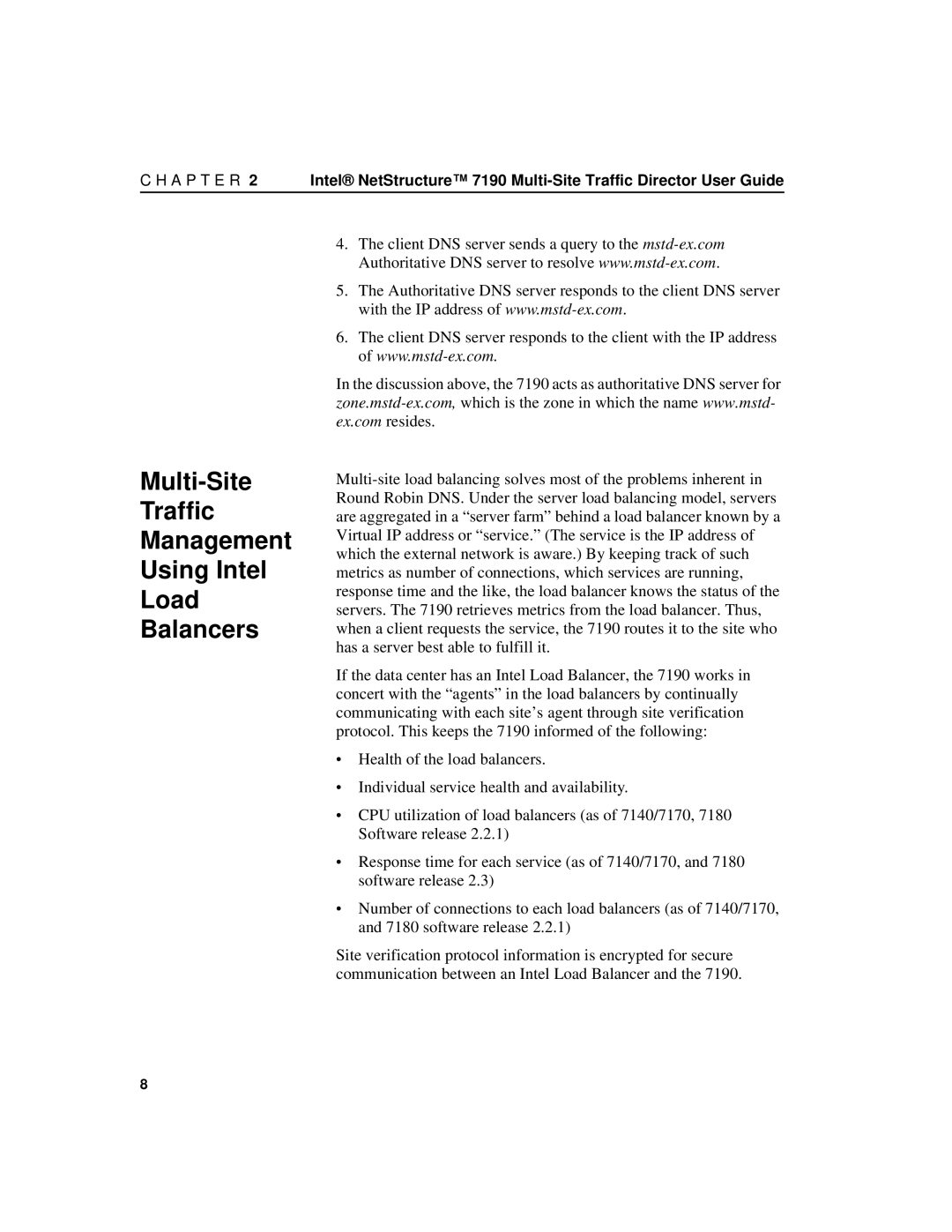C H A P T E R 2 | Intel® NetStructure™ 7190 |
Multi-Site
Traffic
Management
Using Intel
Load
Balancers
4.The client DNS server sends a query to the
5.The Authoritative DNS server responds to the client DNS server with the IP address of
6.The client DNS server responds to the client with the IP address of
In the discussion above, the 7190 acts as authoritative DNS server for
If the data center has an Intel Load Balancer, the 7190 works in concert with the “agents” in the load balancers by continually communicating with each site’s agent through site verification protocol. This keeps the 7190 informed of the following:
•Health of the load balancers.
•Individual service health and availability.
•CPU utilization of load balancers (as of 7140/7170, 7180 Software release 2.2.1)
•Response time for each service (as of 7140/7170, and 7180 software release 2.3)
•Number of connections to each load balancers (as of 7140/7170, and 7180 software release 2.2.1)
Site verification protocol information is encrypted for secure communication between an Intel Load Balancer and the 7190.
8
